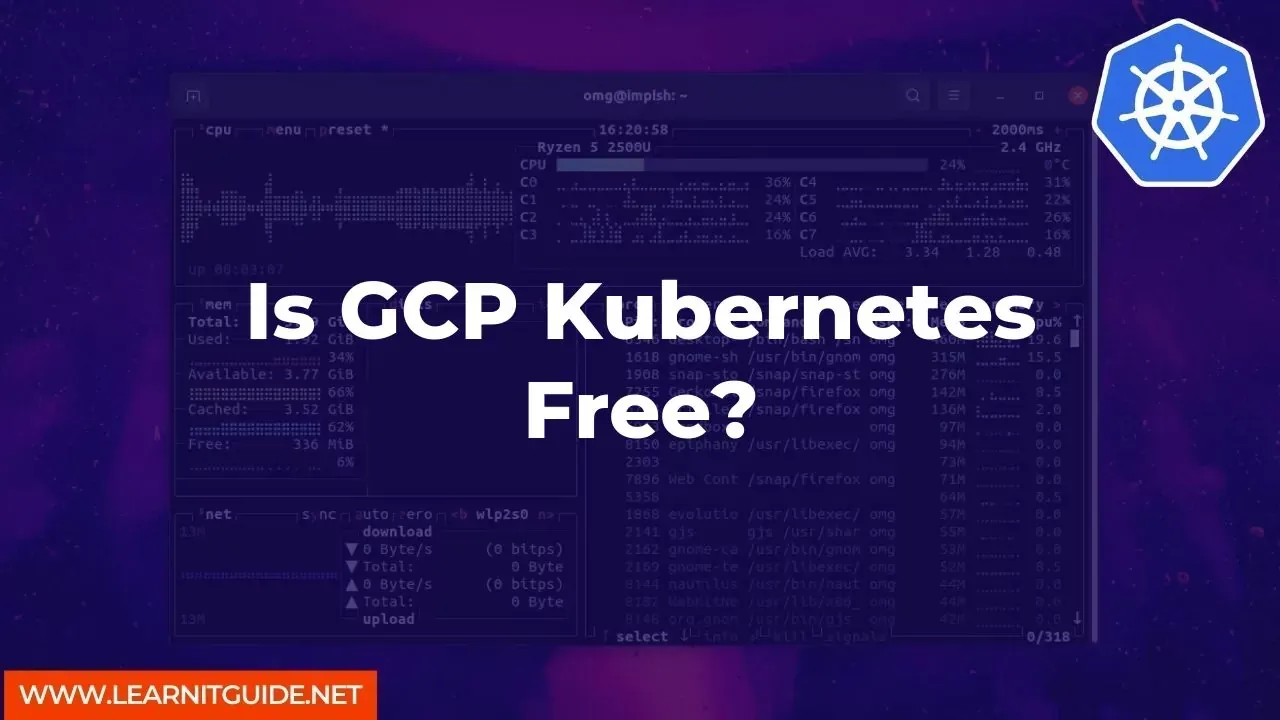Kubernetes is a popular open-source container orchestration platform that has gained widespread adoption in recent years. It allows developers to deploy and manage containerized applications at scale. Google Cloud Platform (GCP) offers a managed Kubernetes service called Google Kubernetes Engine (GKE). But the question arises, is GCP Kubernetes free?
In this article, we will answer this question and also provide more information on GKE pricing.
GKE Pricing:
Google Kubernetes Engine is not entirely free. There are certain costs involved in using this service. However, GKE offers a free tier that allows users to run small workloads at no cost. The free tier provides one node per cluster and allows up to 5GB of persistent disk storage. This is suitable for running small applications with low traffic volumes.Once you exceed the free tier limit, you will be charged according to the usage. The pricing is based on the number of nodes, their size, and the duration of their usage. Additionally, there are charges for load balancing, network egress, and other services that are used with GKE.
How to Use GKE for Free:
To use GKE for free, you need to sign up for a GCP account and enable the free tier. Here are the steps to get started with GKE:- Sign in to the Google Cloud Console using your Google account.
- Create a new GCP project or select an existing project.
- Enable billing for the project. Note that you will not be charged unless you exceed the free tier usage limit.
- Create a new GKE cluster by navigating to Kubernetes Engine in the side menu and clicking on the Create Cluster button.
- Choose the desired options for your cluster, such as the region, number and type of nodes, and node size.
- Under the Node Pools tab, select the checkbox for Enable preemptible nodes. This will allow you to use low-cost preemptible instances for your nodes.
- Complete the cluster creation process by clicking on the Create button.
- You can now deploy your applications to the GKE cluster and start using it.
Other Factors to Consider:
While GKE offers a free tier, it is essential to keep in mind that there are other factors to consider when using this service. These include the cost of running your applications on GKE, as well as the cost of other services that you might need to use alongside GKE. For example, if you need to use load balancing or network egress, there will be additional charges.So, GCP Kubernetes Engine (GKE) is not entirely free, but it does offer a free tier that allows users to run small workloads at no cost. Once you exceed the free tier limit, you will be charged based on the usage.
It is essential to keep in mind the other factors to consider when using GKE, such as the cost of running your applications and the cost of other services that you might need to use alongside GKE. However, GKE remains an excellent option for developers who need a managed Kubernetes service that is reliable, scalable, and easy to use.
Related Searches and Questions asked:
That's it for this post. Keep practicing and have fun. Leave your comments if any.







0 Comments